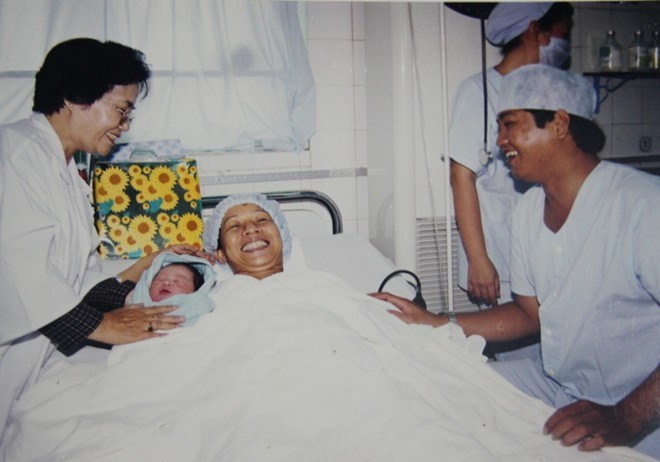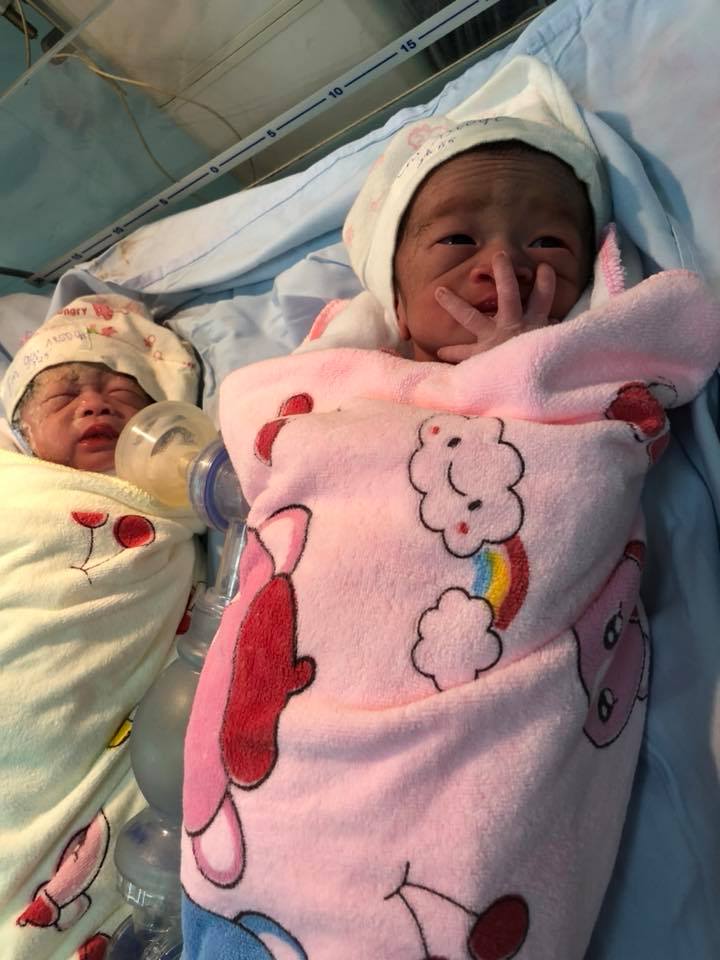A glance back on the 20 – year journey of vitro fertilization in Vietnam
It has been over 20 year since the first successful in-vitro fertilization in Vietnam. April 30th, 1998 is considered a “historic day” as the first baby was born in Vietnam with the help of In-Vitro Fertilization (IVF) technique.
It not only bring hope for millions of infertile couples who have never had the chance to become parents, but also marks a remarkable mile-stone in the history of reproductive health care services, one of the greatest achievements made by Vietnam in the field of medicine, especially reproductive medicine.

The first baby girl born via in-vitro fertilization in 1998 (photos of Tu Du hospital).
What is in-vitro fertilization?
In vitro fertilization (IVF) is one of the most effective fertility treatments, as it can be done using one’s own gametes (eggs or sperms), donated gametes, embryos or even a gestational carrier. In IVF, egg (ovum) is removed from the ovaries of the woman and mixed with sperm of the husband or donor in a laboratory culture dish (in Latin word, “in vitro” means “in glass”).
The fertilization process takes place in controlled laboratory condition, outside of the female body. Then this fertilized ovum, now called zygote, is implanted in the uterus of the woman, where it goes through natural phases of growth and develop into a baby.
In cases of poor sperm quality, the sperm is injected into the ovum using a micromanipulation technique, known as intra-cytoplasmic sperm injection (ICSI).
In the world, the first in-vitro fertilization baby, popularly known as “test tube” baby, was born in 1978 and in 1981 the delivery of the first IVF pregnancy in the United States was announced by Howard and Georgiana Seeger-Jones.
The 20–year journey of in-vitro fertilization in Vietnam
Vietnam’s first successful IVF cycle was started in 1997 and the first three IVF babies were born on April 30, 1998, marking a historic milestone in the history of Vietnam’s IVF industry.
The first IVF project in Vietnam, kick started in Tu Du Hospital, was considered a “historic campaign”. It required a huge amount of preparation work regarding infrastructures, manpower, legal procedures, finance, etc. It took Dr Nguyen Thi Ngoc Phuong (former Director of Tu Du Hospital) and her team a lot of hardwork to successfully bring this technology to Vietnam.
In 1994, Dr. Nguyen Thi Ngoc Phuong received a PhD scholarship in France. During the time, she also facilitated study trips in France and Singapore for staffs and doctors of Tu Du Hospital to gain insights of IVF technology in these advanced countries.
Legally, Dr. Phuong and Lawyer Phan Trung Hoai also drafted a proposal to establish a sperm bank for Tu Du Hospital.
After many years of preparation, on August 19, 1997, embryos transfer was conducted for more than 30 primary infertile women in Vietnam via in- vitro fertilization technique. Out of these, 10 cases were successful. On April 30, 1998, the first three in vitro fertilization babies were born, marking a turning point for the Vietnamese obstetrics sector.
In 1999, the first baby was born via intra-cytoplasmic sperm injection (ICSI), a process which surmounts fertilization problems or poor sperm quality, especially poor sperm movement.
 |
A twin born in Quang Ninh province thanks to ART. Photo: Quang Ninh TV
The year 2000 marked the birth of the first assisted reproductive technology (ART) baby using recombinant follicle-stimulating hormone (FSH), which was followed by the birth of the first baby born from a donor’s egg in the same year.
There have been other technical developments as well- the first gestational surrogacy baby in 2001, the first MESA-ICSI baby in 2002, and the first GnRH antagonist baby in 2003. Year 2003 also marked the first frozen embryo baby and the one thousandth ART baby at Tu Du Hospital.
The first case of birth using frozen oocyte (egg) and sperm method was conducted in 2004.
The two thousand ART birth was at Tu Du Hospital in 2005 and 2006 marked the first pregnancy from in vitro maturation of oocytes (IVM).
Since its launch at Tu Du, ART has been applied in 20 hospitals nationwide. These include Hung Vuong Hospital, Si hospital and Van Hanh Hospital in HCMC; Hanoi Obstetrics & Gynecology; Central Obstetrics & Gynecology; Hai Phong Obstetrics& Gynecology, and Thanh Hoa Obstetrics & Gynecology in the north; and the Central Hue Hospital in Thua Thien-Hue Province.
IVF has been practiced in developed countries for 40 years. Despite the technique has just been carried out in Vietnam for 20 years, it has been growing rapidly. There are twenty IVF operation centers in Vietnam which conduct IVF for 15,000 couples a year, with low cost but still result in high rate of success.
Costs of IVF procedure in Vietnam is only 35% of those in United States US and Europe and only 20% of the cost in Germany.
According to an unofficial estimation, in over the last 20 years, there have been 40,000 children were born via IVF in Vietnam in various health care facilities. According to the Ministry of Health, the infertility rate in Vietnam is 7.7%, while 35-50% of assisted reproduction cases are successful. Certainly, IVF brings happiness to thousands of infertile Vietnamese couples./.
( Hue Minh (compile) )
Recommended
 Handbook
Handbook
Vietnam Moves Up 8 Places In World Happiness Index
 Handbook
Handbook
Travelling Vietnam Through French Artist's Children Book
 Multimedia
Multimedia
Vietnamese Turmeric Fish among Best Asian Dishes: TasteAtlas
 Handbook
Handbook
From Lost to Found: German Tourist Thanks Vietnamese Police for Returning His Bag
 Handbook
Handbook
Prediction and Resolution for the Disasters of Humanity
 Handbook
Handbook
16 French Films To Be Shown For Free During Tet Holiday In Vietnam
 Handbook
Handbook
Unique Cultural and Religious Activities to Welcome Year of the Snake
 Handbook
Handbook
